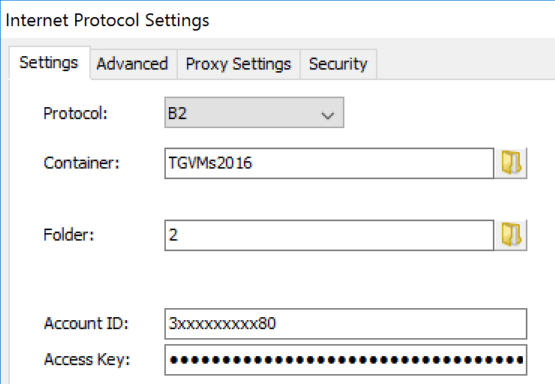Low Cost, High Performance Cloud Storage with Backblaze B2

Using Syncovery, you can now store and synchronize your data on BackBlaze B2. Syncovery is a generic file synchronization, mirroring and backup tool that provides an extremely wide range of features. It is a lightweight tool that runs on a variety of platforms and is highly optimized to run efficiently with little CPU and memory usage.
Advantages of using Backblaze B2 with Syncovery
- B2 is a high-reliability and high performance storage
- Syncovery runs on Windows, Macintosh, Linux, FreeBSD, and Solaris/Illumos (Intel only)
- Supported processors are i386, x64, ARM, ARM64, as well as PPC and PPC64EL
- Syncovery can run directly on Synology, QNAP and other NAS devices (dedicated installers are available for Synology and QNAP)
- You can set up multiple jobs with extreme customizeability, including:
- File Masks & Filters
- Compression, Encryption, and Filename Encryption
- Multithreaded Transfers
- File List Cache can avoid re-scanning the B2 folders every time the profile runs
- Manual, scheduled, or real-time operation
- One-Way or Two-Way Syncs
- SmartTracking for Two-Way Syncs can detect deleted files and you can use B2 as central repository for sharing files between several computers
- File timestamps are preserved on B2
- Detailed log files and email notifications
- Synthetic Backup can upload only the changed blocks in larger files to save bandwidth
- You can also use the same tool to sync local folders and other types of storage.
- Many additional options are available
- For more details on Syncovery, please visit the main page on our web site as well as our Feature Matrix
Setting it up
Create a new profile, using either Wizard Mode or Advanced Mode. On the right-hand side, click the Internet button and change the protocol to B2 as shown in the following screenshot. Enter an Application Key ID and the Application Key itself, which you can get from the Buckets page in the B2 web interface. Choose your container and folder with the Browse buttons. To create a new container, just type the name.

B2 Settings
